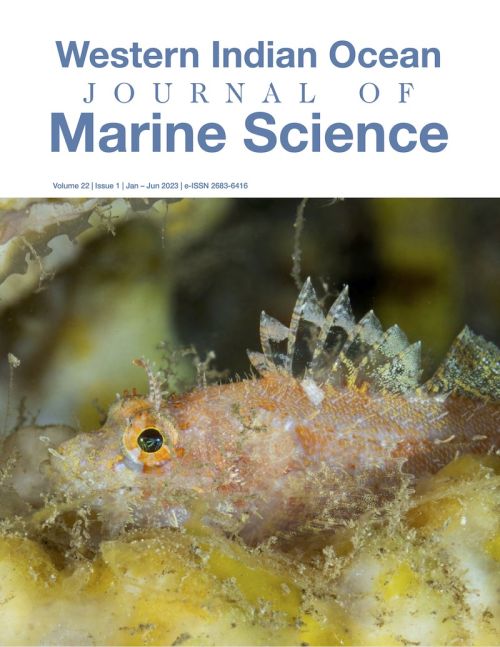Main Article Content
The first attempts made towards the domestication of sea cucumbers in Kenya
Abstract
The potential for culture of sandfish Holothuria scabra in Kenya was investigated based on a sample of 1000 wild individuals with an average weight of 40-80 g. This experiment was conducted to identify suitable methods of collection, transportation, acclimatization, and growth at different stocking densities. Packing methods tested during collection were oxygen filled plastic bags and open basins. For method 1, Sample 1 sandfishes were carried individually in oxygen filled plastic bags with sea water. Sample 2 included a total of five sandfishes per bag, and Sample 3 had a maximum of ten sandfishes. Under method 2 specimens were transported using open basins containing sand and aerated sea water in densities of 10, 20 and 30 individuals per basin. The mean (±SD) percentage evisceration rate during transportation in method 1 was 0 for a density of 1, 3.33 ± 5.77 % for a density of 5, and 20 ± 10 % for a density of 10. In method 2 evisceration occurred at all the three densities; 23.3 ± 15.28 % for the low density, 23.33 ± 2.8 % for the middle density and 36.6 ± 3.33 % for the higher density. The findings of this study provide information to contribute to the development of marine aquaculture of sea cucumber in Kenya.






